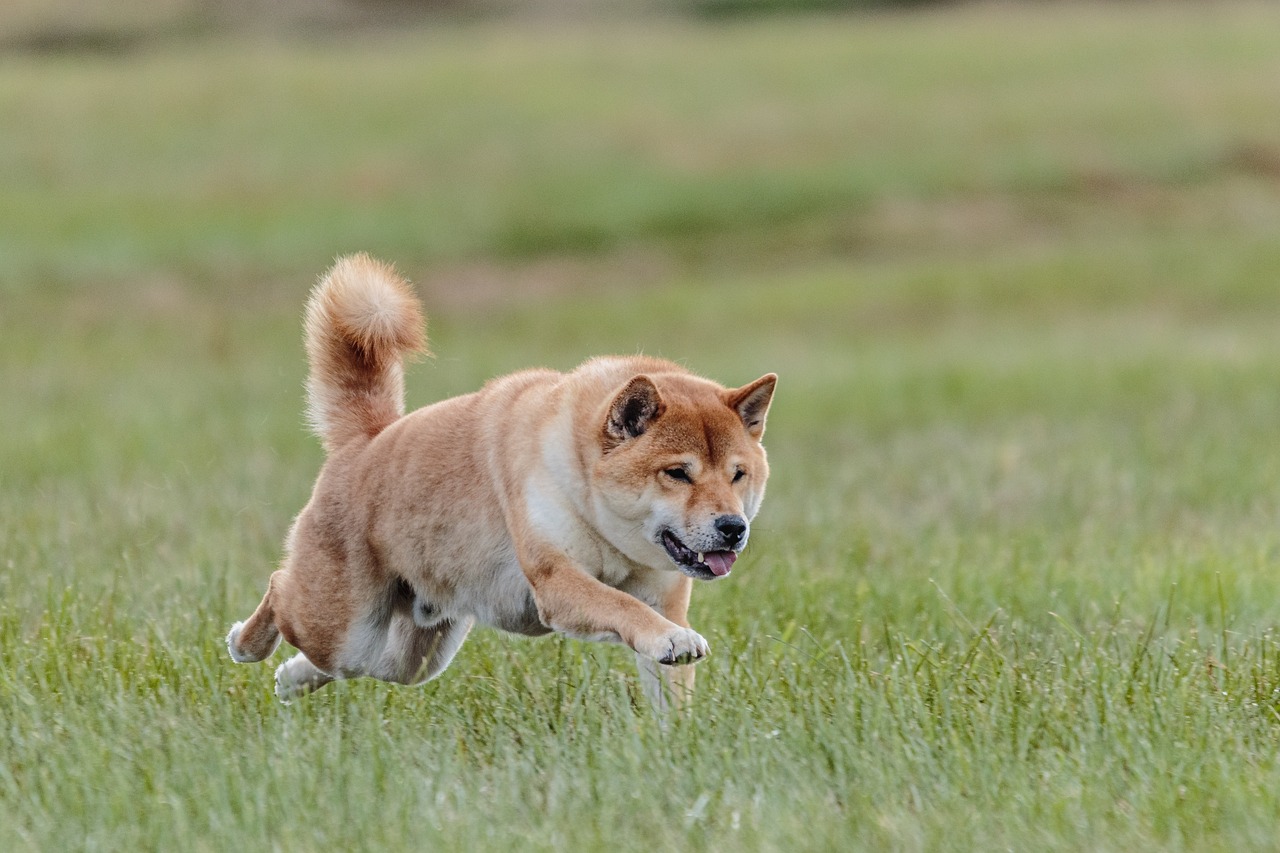The Shiba Inu, Japan’s smallest and oldest native breed, is known for its fox-like appearance and spirited personality. While they may not require the exercise levels of larger, more athletic breeds, providing the right amount and type of exercise is key to their well-being. This article will explore the exercise needs of a Shiba Inu and the activities that suit them best.
1. Deciphering the Shiba Inu’s Exercise Needs
Shiba Inus typically need around 30 to 60 minutes of exercise per day. They possess a moderate energy level that should be channeled through engaging physical activities.
2. The Importance of Physical Activity for Shiba Inus
Consistent exercise helps Shiba Inus maintain a healthy weight, supports joint health, and contributes to mental well-being. It also aids in curbing potential behavioral issues like stubbornness or aggression.
3. Ideal Types of Exercise for Shiba Inus
Shiba Inus enjoy walks, jogs, and moderate hikes. They also have a high prey drive, so activities like fetch or agility that simulate their natural hunting instincts are beneficial.
4. Balancing Mental and Physical Stimulation
Mental exercise is crucial for the intelligent Shiba Inu. Training sessions, puzzle toys, and new tricks can provide the mental challenge they crave.
5. The Role of Play in Exercise
Play is an important aspect of a Shiba Inu’s exercise routine. Engaging in play with other friendly dogs or interactive toys can provide both physical activity and socialization.
6. Adjusting Exercise with Age
The exercise needs of a Shiba Inu will change as they age. While puppies require short bursts of play, adults can handle more vigorous activity, and senior dogs may need a gentler approach.
7. Weather Considerations for Your Shiba Inu
Shiba Inus are well-adapted to both cold and warm climates, but precautions should be taken during extreme temperatures to ensure their comfort and safety during exercise.
8. Recognizing Signs of Sufficient Exercise
A well-exercised Shiba Inu will be calm indoors, show a healthy appetite, and sleep soundly. Without adequate exercise, they may exhibit signs of anxiety or destructive behavior.
9. Incorporating Routine and Consistency
Shiba Inus benefit from a consistent exercise schedule. Routine helps them understand what to expect each day and can reduce stress or behavioral issues.
10. Health Checks and Exercise Adjustments
Regular vet check-ups are important to tailor your Shiba Inu’s exercise to any health conditions. Monitoring your dog’s response to exercise can also help in adjusting the routine as needed.
Conclusion
While the Shiba Inu may be independent and sometimes aloof, regular exercise is essential to their health and happiness. A combination of physical activities, mental challenges, and consistent routines will ensure your Shiba Inu remains a well-balanced and content companion. Consult with a veterinarian to create an exercise plan that considers any specific health needs of your Shiba Inu.
Frequently Asked Questions About Exercising A Shiba Inu
1. How much exercise does a Shiba Inu need?
Shiba Inus require moderate exercise, typically around 30 to 60 minutes daily. This can be divided into two or three sessions, as they enjoy both physical activity and mental stimulation to satisfy their energetic yet manageable disposition.
2. What kind of exercise is best for Shiba Inus?
Shiba Inus benefit from a mix of activities such as brisk walking, running, and playing fetch. They also enjoy mental challenges like agility training or interactive play that tests their intelligence and satisfies their natural curiosity.
3. Are Shiba Inus good running partners?
Shiba Inus can be good running partners for short to medium distances. They have a spirited chase instinct and stamina that can make them enjoy jogs, but always monitor their behavior, as they can be independent and may get distracted by scents or small animals.
4. Can Shiba Inus participate in dog sports?
Yes, Shiba Inus can excel in dog sports like agility, obedience, and rally, which are great outlets for their energy and intelligence. These activities not only exercise their bodies but also provide mental stimulation.
5. How can I ensure my Shiba Inu gets enough mental stimulation during exercise?
Incorporate training exercises into their physical activity routine, challenge them with puzzle toys, and practice commands during walks to keep their mind engaged. Shiba Inus are clever and will enjoy the mental challenge as much as the physical one.
6. How do I exercise my Shiba Inu in inclement weather?
Indoor games like hide and seek, tug-of-war, or indoor fetch can keep a Shiba Inu active during bad weather. Additionally, short training sessions or trick training can provide good mental exercise indoors.
7. How do I know if my Shiba Inu is getting enough exercise?
A Shiba Inu getting enough exercise will be calm indoors, display a healthy weight, and show no destructive behaviors. A lack of exercise may result in excessive energy, which can lead to mischief or disobedience.
8. What precautions should I take when exercising my Shiba Inu in hot weather?
Exercise your Shiba Inu during cooler parts of the day in hot weather, provide plenty of water, and keep exercise sessions short to prevent overheating. Be alert to signs of heat stress, such as heavy panting or reluctance to move.
9. Do Shiba Inus enjoy swimming?
Some Shiba Inus may enjoy swimming, but it’s not a breed-wide preference. If your Shiba Inu likes water, swimming can be a great low-impact exercise option. Always introduce swimming gradually and ensure safety.
10. How should exercise routines be adjusted for a senior Shiba Inu?
Senior Shiba Inus may require less vigorous exercise. Gentle walks and shorter play sessions suited to their mobility levels are important, along with continued mental stimulation to keep them sharp and engaged.

 Toledo, United States.
Toledo, United States.